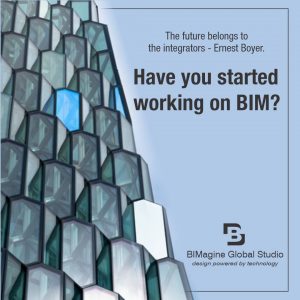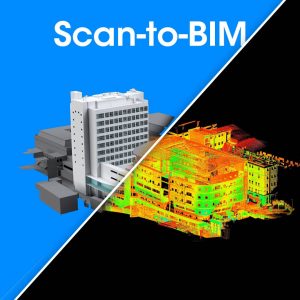Benefits of BIM

BIM – Building Information Modeling as an Effective Method for Planning and Buildings.
BIM in architecture has been on the rise for several years. BIM stands for Building Information Modeling and describes a planning method that enables architects, engineers and other people involved in the construction to plan intelligently and digitally. BIM is based on a 3D model, which brings together the data of all involved planners. This means that all information required for planning, building and operating buildings can be digitally coordinated.
When planning a building, various information and data must be recorded. In order to be able to exchange with the individual participants, the building information is constantly renewed and expanded. Digitization optimizes workflows. This saves time. Errors within the planning become clearer and the buildings can be optimized. With Building Information Modeling, all building lifecycle operations can be brought together and linked.
Building Information Modeling: The benefits at a glance
The term BIM was coined by the US software manufacturer Autodesk and has been proven for many years in the Scandinavian countries, but also in the US and the UK. In Germany, BIM is still in its infancy, which is to be changed, inter alia, by the “Digital Plan Planning and Construction Plan” of the Federal Ministry of Transport and Digital Infrastructure, BMVI for short.
As a reason for the increased focus on Building Information Modeling, the advantages are repeatedly stated. Compared to conventional planning, BIM is considered to be particularly efficient.
These benefits speak for BIM (Building Information Modeling):
Improved collaboration on a project with BIM: All project participants can work together on a building data model, view it at any time in the latest version and make changes to it.
Development of a precise 3D model: Thanks to the acquisition of all relevant data for the building, an accurate 3D model can be created in advance. From finished 3D models, for example, complete technical drawings can be read out.
Early detection and elimination of planning errors and interface problems: Any errors within the planning and in connection with interfaces are detected faster and more reliably, which ultimately benefits the construction project.
With BIM, projects in the construction industry can be realized more effectively and cost-effectively. Workflows are made more efficient and the quality of work increases. Thanks to coordinated processing, building information modeling is an integral part of architecture.
Building Information Modeling: Application in Practice
Within the construction industry, many companies rely on the BIM model. This is because the architecture program can be used in a particularly versatile way.
In these industries BIM is used among others:
Construction: Civil engineering companies use the process for complex structures and construction sites to fully capture the construction project. The entire planning process, but also all construction processes can be mapped with BIM.
Infrastructure planning: BIM can be used as a planning method in the area of infrastructure. Specialists use such software solutions to plan the city and subway network as well as streets of any kind.
Utilities: Building Information Modeling is also used to design water and energy grids. Thanks to the clear visualization, construction projects can be planned in detail.

Benefits of BIM
BIM - Building Information Modeling as an Effective Method for Planning and Buildings. BIM in architecture has been on the rise...

Scan to BIM Process
As-built drawings are an integral part of the construction process. It compares the final structure with the original plan and...

Types of Construction Drawings
What is the first thing that comes to your mind when you hear the word construction? It’s always a picture...

BIM for Architects
What is BIM work? For starters, it should be noted that the BIM work technique is based on a 3D geometric...
Let's Connect

